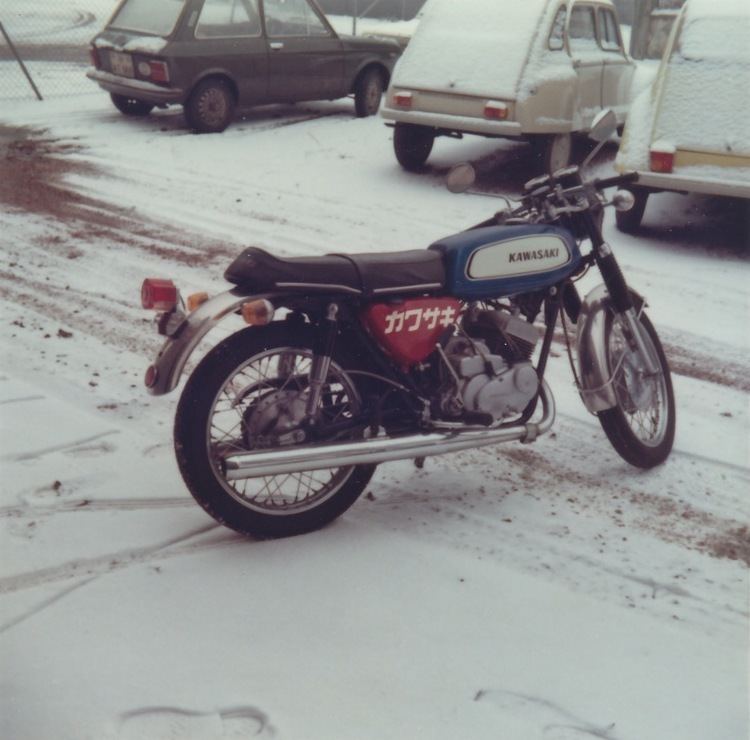Manufacturer Kawasaki | Production 1967–1971 Class Standard | |
 | ||
Engine Air-cooled parallel 2-cylinder, Two-stroke, 2 rotary inlet valves | ||
The Kawasaki A1 Samurai is a 250 cc (15 cu in) standard class Kawasaki motorcycle which was sold from 1967 through 1971.
Contents
Development
The Kawasaki W1 did not sell as expected, because all rival bikes were still faster, lighter and had better steering. Kawasaki developed the lighter A1 Samurai in 1967. The A1 took center stage as a high-performance machine, with approximately 80ps per liter. It was quickly followed by a larger-bore model, the Kawasaki A7 Avenger which shared most of the Samurai components except the motor.
A1SS
The A1SS Samurai has a crossover dual exhaust mounted on the left side and just below the seat. Other than exhaust system, there were no other changes between the standard A1 and A1SS.
A unique engine
The engine was a unique straight twin, two-stroke, air-cooled, oil-injected, dual rotary disc valve. The engine's ignition air supply began in an air filter canister below the seat and was pulled through a large plenum chamber just above the transmission and behind the cylinder head then downward into the two internal passages leading to the carburetor housing feeding the carburetors. The A1 had two Mikuni carburetors located on the engine's left and right sides and inline with the crankshaft. The carburetors were enclosed and protected from the elements by carburetor covers fixed to the crankcase. Inboard of each carburetor, and supporting each carburetor, was the disc cover. The rotary disc valve was housed inboard of that cover. The A1 Samurai motor was lubricated by the Superlube system, with 2-stroke oil directly injected in the intake tract. Previously equipped with points, the ignition system was equipped in 1969 with a Capacitor discharge ignition including thyristor-based switching system then increased the voltage to between 25,000 and 30,000 volts reducing the unburned fuel mixture within the cylinders.
This combination of displacement (247cc), CDI system, and rotary discs produced 31 hp (23.1 KW) @ 8000 RPM gave the Samurai a power-to-weight ratio of 1 horsepower per 11 pounds of weight, a 0-60 mph of 6.6 second, making the Samurai as fast or faster than production competitors in its class.
Appearance
Competitors
1969-1970 contemporaries and competitors of the A1 Samurai were:
Specifications
Racing
A1 Samurai have and can participate in the American Historic Racing Motorcycle Association (AHRMA) competition. Kawasaki Mach III's successfully raced with Ginger Molloy aboard his "Green Meanie" finishing 2nd just behind Giacomo Agostini's MV Agusta in the 1970 500cc World Championship. Kawasaki's
